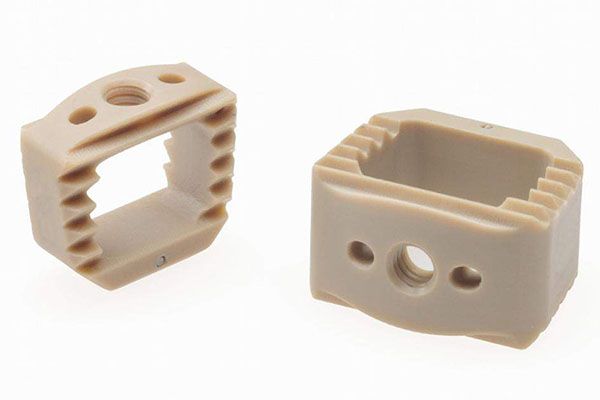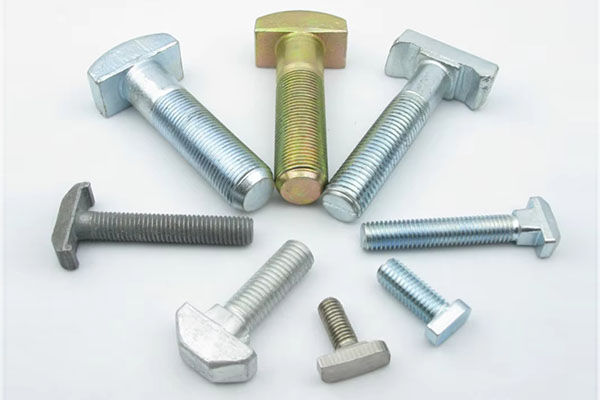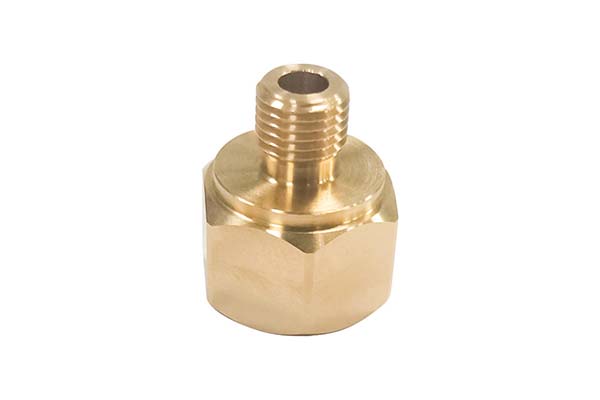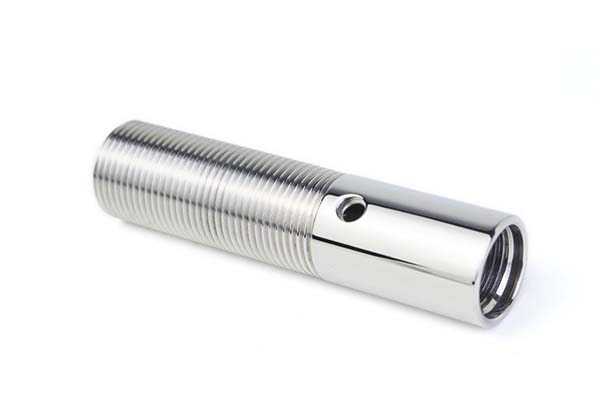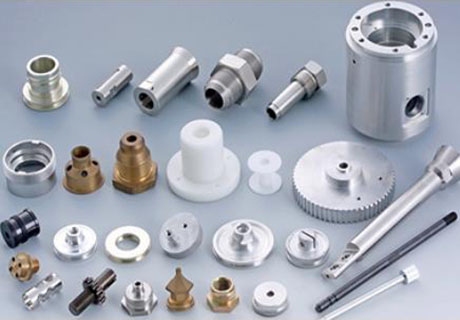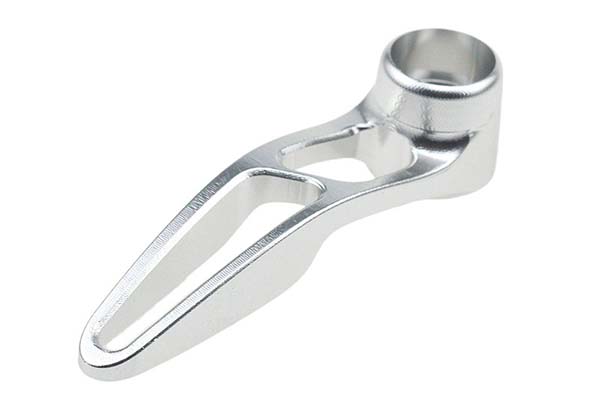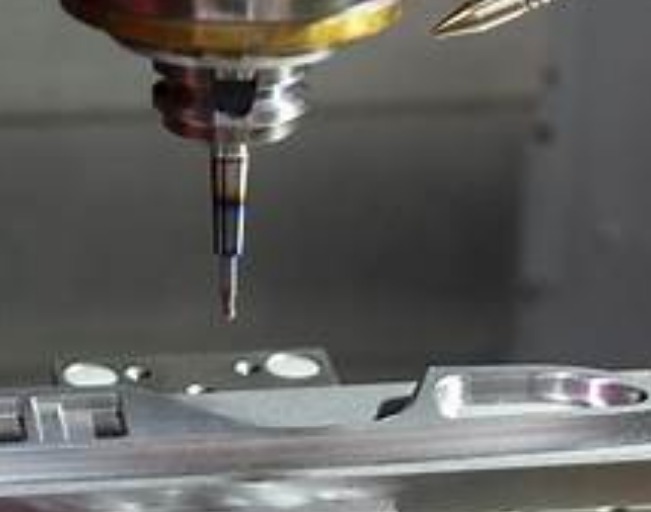1. Introduction: The Precision Powerhouse Reshaping Industry Landscapes
In the fast-paced realm of modern manufacturing, milling mastery has emerged as a critical driver of innovation, bridging the gap between ambitious design concepts and high-precision production. More than a mere machining technique, milling mastery combines advanced tooling, data-driven processes, and deep material expertise to craft components that meet the stringent demands of industries from aerospace to medical devices.
This article explores how this discipline is revolutionizing manufacturing by delivering unmatched precision, material versatility, and process efficiency. Through technical insights, real-world data, and industry case studies, Yigu Technology reveal how milling mastery is not just a service but a strategic asset for businesses aiming to stay ahead in a competitive global market.
2. The Technical Core: Foundations of Milling Mastery
2.1. The Mechanics of Precision Milling
At its core, milling mastery relies on computer numerical control (CNC) systems to orchestrate multi-axis movements, enabling subtractive manufacturing with micron-level accuracy. Key technical pillars include:
- Multi-Axis Capability: 5-axis CNC machines, such as the Mazak Integrex i - 400, represent a quantum leap in machining flexibility. These advanced machines can navigate complex geometries with ease, achieving positional accuracy of ±0.001mm. This high - precision positioning allows manufacturers to produce intricate parts in a single setup, reducing setup times by 40% compared to 3-axis counterparts. For Yigu Technology example, in the production of aerospace engine components, 5-axis milling can create complex turbine blades with internal cooling channels in one operation, eliminating the need for multiple setups and reducing the risk of cumulative errors.
- High-Speed Machining (HSM): HSM is another cornerstone of milling mastery. Spindles rotating at 40,000+ RPM with ceramic bearings are a common sight in modern milling operations. These high - speed spindles minimize heat generation during machining. In the aerospace industry, where components like wing skins and engine casings require a high - quality surface finish to minimize aerodynamic drag, HSM can achieve surface finishes as fine as Ra 0.2μm. The reduced heat generation also means less thermal distortion of the workpiece, ensuring dimensional stability throughout the machining process.
- Toolpath Optimization: Advanced software like Hypermill is revolutionizing the way milling operations are planned. By using 3D modeling, it can create highly efficient cutting paths. For intricate parts, this optimization can reduce material waste by 30% and cycle times by 25%. Consider the production of medical implants, which often have complex geometries. Hypermill can analyze the 3D model of the implant and generate a toolpath that maximizes material utilization while minimizing the time spent on non - productive movements, such as tool retractions and rapid traverses.
2.2. Material Mastery: Conquering Complex Alloys and Composites
Modern manufacturing demands machining of high - performance materials, and milling mastery rises to the challenge. The following Yigu Technology table showcases how different materials are tackled:
| Material Type | Machining Challenge | Mastery Solution | Performance Outcome |
| Titanium Alloys | Low thermal conductivity (15 W/m·K) | Cryogenic cooling (–196°C) + carbide tools | Tool life extended by 50%, dimensional stability ±0.005mm |
| Inconel 718 | High hardness (45 HRC) | Diamond - coated end mills + vibration - damping fixtures | Surface roughness reduced to Ra 0.4μm, ideal for turbine blades |
| Carbon - Fiber Composites | Delamination risks | Low - feed, high - speed cutting (8,000 RPM) + vacuum clamping | 99% defect - free surface finish for aerospace panels |
Titanium alloys, with their low thermal conductivity, pose a challenge as heat generated during machining can quickly damage the tool. Cryogenic cooling, combined with carbide tools, addresses this issue. By cooling the cutting zone to - 196°C, the tool life is extended by 50%, and the dimensional stability of the part is maintained within ±0.005mm. This is crucial for applications in the aerospace and medical industries, where precision is non - negotiable.
Inconel 718, a nickel - based superalloy with high hardness (45 HRC), requires specialized tools and fixtures. Diamond - coated end mills are used to cut through the tough material, while vibration - damping fixtures prevent chatter during machining. The result is a surface roughness of Ra 0.4μm, which is ideal for turbine blades in jet engines, where a smooth surface is essential for efficient operation.
Carbon - fiber composites, prized for their high strength - to - weight ratio, are prone to delamination during machining. Low - feed, high - speed cutting at 8,000 RPM, combined with vacuum clamping, ensures a 99% defect - free surface finish. This makes it possible to produce large aerospace panels with the required structural integrity and surface quality.
3. Competitive Advantages: Why Milling Mastery Matters
3.1. Precision Beyond Conventional Limits
Milling mastery redefines the boundaries of precision in manufacturing, far surpassing the capabilities of traditional milling techniques. A comparative analysis clearly showcases the quantum leap in performance:
| Parameter | Traditional Milling | Mastery-Level CNC Milling | Improvement Factor |
| Dimensional Accuracy | ±0.05mm | ±0.001mm | 50x |
| Surface Roughness (Ra) | 1.6μm | 0.3μm | 5.3x |
| Feature Size (Minimum) | 500μm | 50μm | 10x |
| Tool Life (for Hard Metals) | 2 hours | 8 hours | 4x |
In traditional milling, achieving a dimensional accuracy within ±0.05mm was considered good. However, with milling mastery, the precision has been enhanced to an astonishing ±0.001mm, a 50 - fold improvement. This level of accuracy is crucial for industries like semiconductor manufacturing, where even the slightest deviation can render an entire batch of products unusable. For Yigu Technology example, in the production of microchips, the precise alignment of components within nanometer - scale tolerances is made possible through milling mastery.
Surface roughness, a critical factor in determining a part's functionality, is also significantly improved. Traditional milling typically results in a surface roughness of 1.6μm (Ra), while mastery - level CNC milling reduces it to 0.3μm, a 5.3 - fold improvement. A smoother surface not only enhances the aesthetic appeal of the product but also improves its mechanical properties, such as reducing friction and wear in moving parts. In the automotive industry, engine components with smoother surfaces can operate more efficiently, leading to better fuel economy and reduced emissions.
The minimum feature size that can be achieved has also been reduced from 500μm in traditional milling to 50μm with milling mastery, a 10 - fold reduction. This allows for the creation of more intricate and complex designs, enabling the development of miniaturized products in industries like medical devices and consumer electronics. For instance, micro - milling techniques can produce tiny holes and channels in medical implants, which are essential for drug delivery systems and tissue integration.
Tool life is another area where milling mastery shines. For hard metals, traditional milling tools typically last for 2 hours, while advanced tools and techniques used in milling mastery can extend the tool life to 8 hours, a 4 - fold increase. This not only reduces the cost of tool replacement but also minimizes production downtime, leading to higher productivity and lower overall manufacturing costs.
3.2. Design Freedom for Complex Geometries
Milling mastery unlocks unprecedented design freedom, enabling the creation of complex geometries that were once considered impossible to manufacture. From sharp internal corners (0.05mm radius) to thin - wall structures (0.5mm thickness), the constraints of traditional manufacturing are effectively eliminated.
- Aerospace Turbine Blades: In the aerospace industry, the performance of turbine blades is critical for the efficiency of jet engines. 5 - axis milling has revolutionized the manufacturing of these blades by allowing the creation of intricate cooling channels with a wall thickness of just 0.2mm. These cooling channels are designed to dissipate heat more effectively, improving the heat dissipation capacity of the blades by 30%. This, in turn, allows the engine to operate at higher temperatures, increasing its efficiency and reducing fuel consumption. The complex 3D shapes of the turbine blades, with their curved surfaces and internal channels, can be precisely machined using 5 - axis milling, ensuring optimal performance.
- Medical Implants: Micro - milling is a game - changer in the production of medical implants. For Yigu Technology example, in the manufacturing of orthopedic screws, micro - milling can produce 0.3mm - diameter holes in cobalt - chromium alloy with an impressive 99.9% straightness. The straightness of these holes is crucial for the proper threading of the screws, as any deviation can affect the stability and effectiveness of the implant. Cobalt - chromium alloy is known for its excellent biocompatibility and mechanical properties, but it is also a challenging material to machine. Micro - milling techniques, with their high precision and control, can overcome these challenges and produce high - quality implants that meet the strict requirements of the medical industry.
3.3. Automation and Smart Manufacturing Integration
The integration of milling mastery with Industry 4.0 technologies has ushered in a new era of manufacturing efficiency and productivity.
- AI - Driven Process Control: Machine learning algorithms are now being used to analyze real - time data from milling operations, such as spindle load, tool wear, and temperature. By continuously monitoring these parameters, the algorithms can optimize feed rates and other machining parameters in real - time. This dynamic optimization reduces scrap rates by 40% by ensuring that the machining process is always operating at its optimal conditions. For example, if the algorithm detects that the tool is starting to wear, it can adjust the feed rate to prevent excessive tool wear and potential damage to the workpiece. This not only saves materials but also reduces the need for rework, improving overall production efficiency.
- IoT - Enabled Monitoring: Internet of Things (IoT) technology has made it possible to monitor milling operations in real - time from anywhere in the world. Sensors are installed on the milling machines to track parameters such as temperature (±0.5°C) and vibration (≤5μm amplitude). This data is then transmitted to a central monitoring system, where it can be analyzed and used to predict potential equipment failures. In high - volume production environments, such as the manufacturing of automotive transmission gears, IoT - enabled monitoring ensures 98% uptime for 24/7 production. By detecting and addressing issues before they cause downtime, manufacturers can significantly increase their production output and reduce maintenance costs. Additionally, the data collected from IoT sensors can be used to improve the design and performance of milling machines, leading to continuous improvement in the manufacturing process.
4. Industry Applications: Where Milling Mastery Shines
4.1. Aerospace: Crafting Flight-Critical Precision
- Jet Engine Components: In the aerospace industry, the demand for high - performance jet engines is constantly on the rise. A leading aerospace supplier has harnessed milling mastery to achieve remarkable results in the production of titanium alloy fan blades. These blades are machined with an astonishing chordal tolerance of 0.01mm. This level of precision is crucial as it directly impacts the aerodynamic efficiency of the engine. By reducing the chordal tolerance to such a minute level, the fan blades can operate more smoothly, resulting in a 5% increase in fuel efficiency. Moreover, the blades are designed to meet the stringent FAA fatigue standards. Fatigue failure in jet engine components can have catastrophic consequences, and the use of milling mastery ensures that the fan blades can withstand the high - stress conditions during flight. The combination of high - precision machining and strict quality control measures has made these fan blades a benchmark in the aerospace industry.
- Satellite Structures: Satellites operate in some of the most extreme environments in the universe, and their structural integrity is of utmost importance. Lightweight aluminum - lithium alloy panels, with a thickness of just 1mm, are used to construct satellite structures. Milling mastery is employed to mill these panels with a flatness tolerance of ±0.02mm. This precise flatness is essential for maintaining the thermal stability of the satellite in the frigid - 200°C space environment. Any deviation from the required flatness could lead to uneven heat distribution, which may in turn affect the performance of the satellite's electronic components. Additionally, the lightweight nature of the aluminum - lithium alloy reduces the overall mass of the satellite, making it more fuel - efficient to launch into orbit. The use of milling mastery in satellite manufacturing showcases its ability to meet the unique challenges of the aerospace industry.
4.2. Medical Devices: Micron - Level Precision for Life - Saving Tools
- Surgical Instruments: The field of minimally invasive surgery has revolutionized modern medicine, and the success of these procedures often depends on the precision of the surgical instruments. Stainless steel forceps with 0.2mm - thick jaws are milled to a surface roughness of Ra 0.1μm. This ultra - smooth surface finish allows surgeons to perform delicate tissue manipulation with ease. In minimally invasive procedures, such as laparoscopic surgeries, the ability to handle tissue gently is crucial to minimize damage to surrounding organs and tissues. The high - precision milling of the forceps ensures that they can grip and manipulate tissue without tearing or causing excessive trauma. This not only improves the success rate of the surgery but also reduces the recovery time for patients.
- Orthopedic Implants: Patient - specific orthopedic implants, such as knee implants made of cobalt - chromium alloy, are becoming increasingly common in the medical field. These implants are milled to a fit accuracy of ±0.005mm using MRI - derived CAD data. The use of MRI - derived data allows for a highly customized implant that precisely matches the patient's anatomy. The high - precision milling ensures a perfect fit, which is essential for achieving osseointegration, the process by which the implant fuses with the patient's bone. In fact, these implants have achieved an impressive 95% osseointegration rate. A higher osseointegration rate means better stability and longevity of the implant, reducing the need for revision surgeries. The combination of advanced imaging technology and milling mastery has transformed the field of orthopedic implant manufacturing, improving the quality of life for countless patients.
4.3. Automotive: Driving Innovation in Electric Vehicles
- EV Motor Components: As the automotive industry shifts towards electric vehicles (EVs), the performance of EV motor components becomes a critical factor. Copper rotors, a key component in EV motors, are milled with a concentricity tolerance of ±0.01mm. This high - precision milling significantly reduces electromagnetic interference by 60%. Electromagnetic interference can disrupt the operation of the motor and other electrical components in the vehicle, leading to reduced efficiency and potential malfunctions. By minimizing electromagnetic interference, the motor can operate more efficiently, with its efficiency boosted to 97%. This high efficiency is crucial for extending the range of the EV, as it allows the vehicle to travel further on a single charge. The use of milling mastery in EV motor component manufacturing is a testament to its role in enabling the advancement of sustainable transportation.
- Lightweight Chassis Parts: Lightweighting is a key strategy in the automotive industry to improve fuel efficiency and vehicle performance. Aluminum alloy structural components with lattice cores, having a density of 1.8 g/cm³, are milled to a tolerance of ±0.03mm. These lightweight components are designed to reduce the vehicle's weight by 25% without compromising its strength. The lattice core structure provides excellent strength - to - weight ratio, making it an ideal choice for automotive applications. The high - precision milling ensures that the components fit together perfectly, maintaining the structural integrity of the vehicle. The use of lightweight chassis parts not only improves the vehicle's handling and acceleration but also reduces its energy consumption, making it more environmentally friendly. The application of milling mastery in the production of these components showcases its contribution to the development of more efficient and sustainable automotive technologies.
5. Conclusion: The Indispensable Role of Milling Mastery
Milling mastery stands as an essential pillar in modern manufacturing, far surpassing the scope of a mere manufacturing technique. In industries where precision, speed, and innovation are not just desirable but crucial, milling mastery has become a strategic necessity.
This mastery is achieved through the seamless integration of advanced technology, in - depth material expertise, and data - driven processes. It serves as the bridge that transforms intricate design concepts into high - performance components. For Yigu Technology example, in the aerospace industry, milling mastery enables the production of engine components with complex geometries and tight tolerances, which are vital for improving fuel efficiency and reducing emissions. In the medical field, it allows for the creation of customized implants that precisely fit the patient's anatomy, enhancing the success rate of surgeries and the quality of life for patients.
The impact of milling mastery on manufacturing is multifaceted. It significantly boosts efficiency by reducing production times through multi - axis machining and high - speed cutting. It also cuts costs by minimizing material waste and extending tool life. Moreover, it spurs innovation by enabling the production of components with previously unattainable designs, opening up new possibilities for product development.
FAQ
- Q1: What are the key technologies for achieving milling mastery?
- A1: Key technologies include multi - axis CNC systems (such as 5 - axis machines for complex geometries), high - speed machining (HSM) with high - speed spindles, and advanced toolpath optimization software like Hypermill.
- Q2: How does milling mastery contribute to cost - reduction in manufacturing?
- A2: It reduces material waste by up to 30% through toolpath optimization, extends tool life (4x for hard metals compared to traditional milling), and minimizes production downtime, thus lowering overall manufacturing costs.
- Q3: In which industries is milling mastery most critical?
- A3: Milling mastery is most critical in aerospace (for jet engine components and satellite structures), medical devices (surgical instruments and orthopedic implants), and automotive (EV motor components and lightweight chassis parts).
